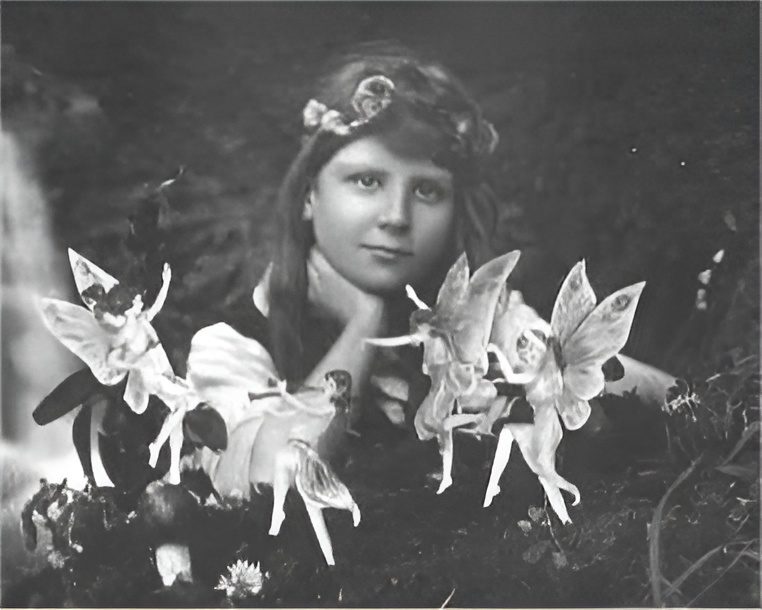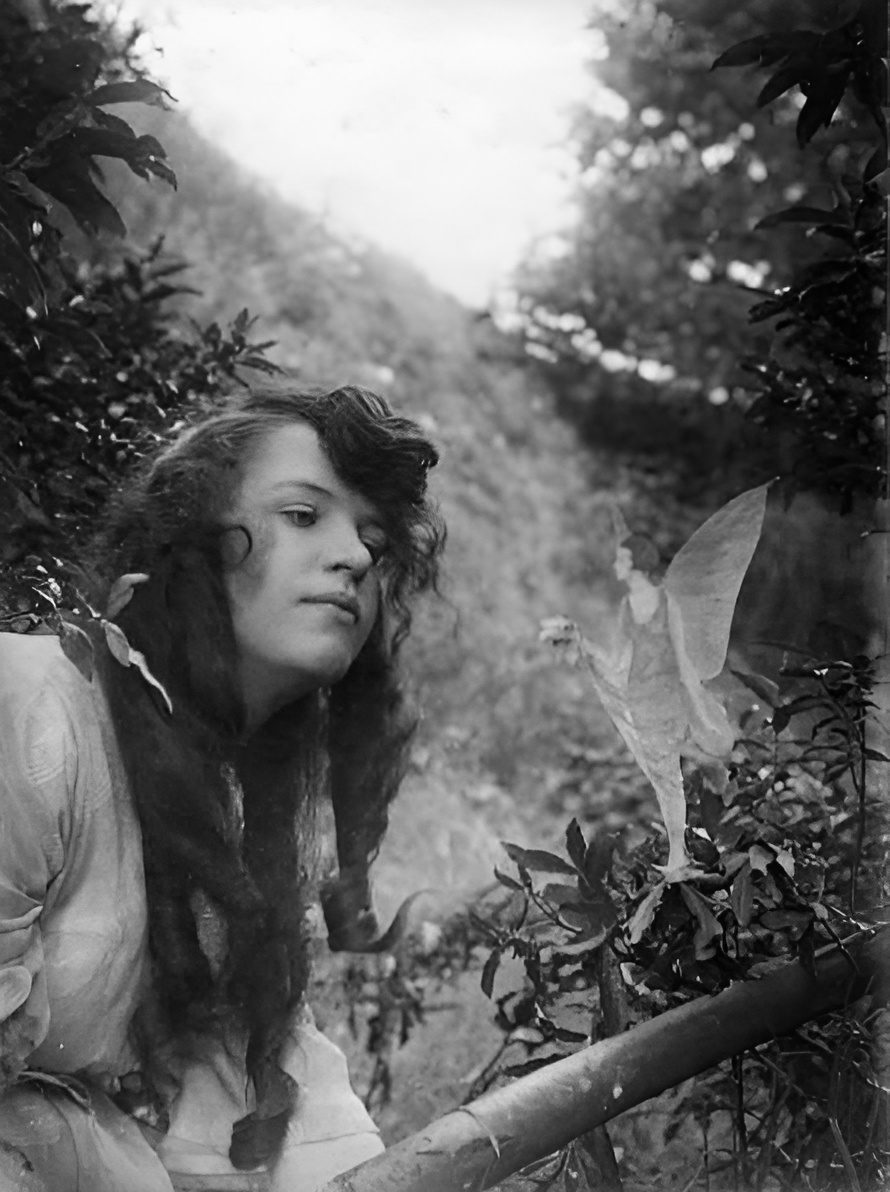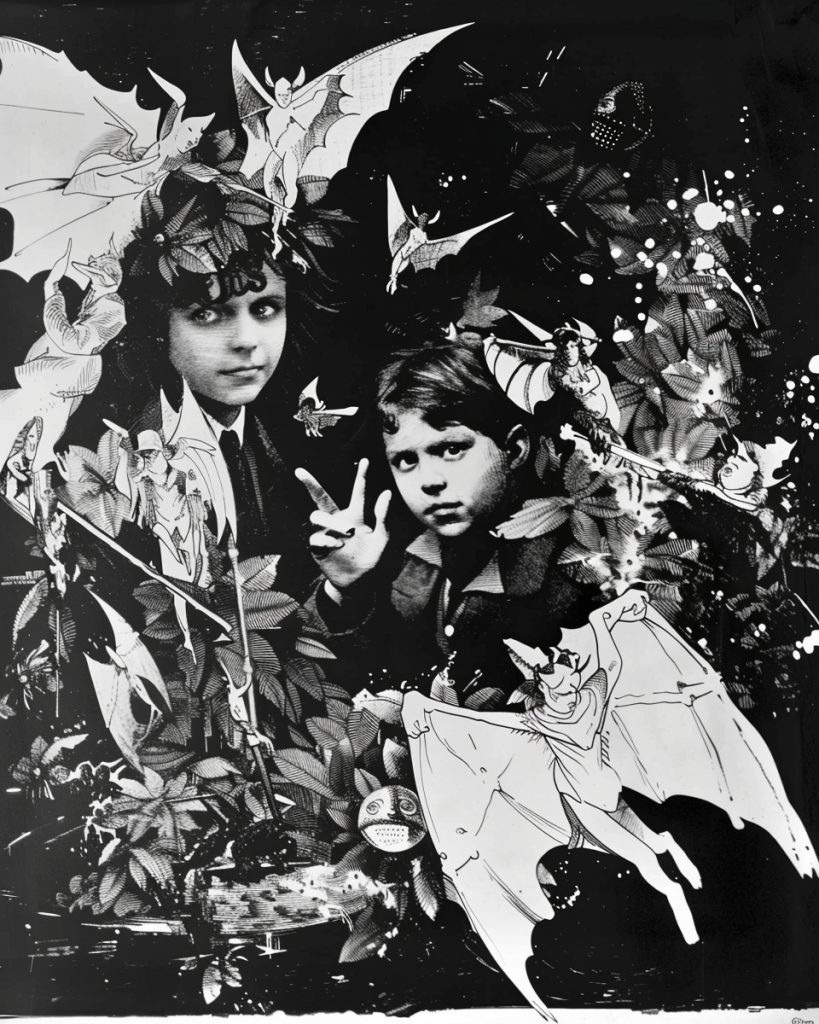In 1917, two young cousins in Yorkshire, England, sparked a sensation that would captivate the world for decades. Frances Griffiths, aged 9, and Elsie Wright, aged 16, claimed to have captured photographic evidence of fairies frolicking in their garden.
The Cottingley Fairies photographs would go on to fool experts, enchant the public, and even convince Sir Arthur Conan Doyle, the creator of Sherlock Holmes, of their authenticity.
The cousins’ seemingly innocent prank took an unexpected turn when their fairy photographs caught the attention of prominent figures in the Theosophical Society, including Edward Gardner and Sir Arthur Conan Doyle. These respected men, already inclined towards spiritualism, saw the images as proof of the existence of supernatural beings.
In 1920, Conan Doyle published an article in The Strand Magazine, presenting the photographs as genuine evidence of fairies.
The Cottingley Fairies saga continued to unfold over the years, with additional photographs taken and intense debates surrounding their authenticity.
It wasn’t until the 1980s that Elsie Wright and Frances Griffiths finally admitted the photos were fake, revealing they had used cardboard cutouts and hatpins to create the illusion.
This admission, however, did little to diminish the enduring fascination with the Cottingley Fairies and the power of belief that sustained the hoax for so long.

The Enigma of Cottingley
The Cottingley fairy photographs captivated the world, blurring the lines between reality and fantasy. This peculiar tale of two young girls and their extraordinary claims sparked a debate that would last for decades.
A Timeline: 1917 to 1920
In 1917, cousins Frances Griffiths and Elsie Wright took a series of photographs in their garden in Cottingley, Yorkshire. These images appeared to show the girls interacting with fairies and gnomes.
The first two photos were taken that summer. They depict Frances with a group of dancing fairies and Elsie conversing with a gnome.
The girls’ families initially dismissed the photos as a childish prank. However, in 1919, Elsie’s mother showed them to members of the Theosophical Society during a meeting in Bradford, sparking interest in the supernatural community.
By 1920, the photographs had caught the attention of Sir Arthur Conan Doyle, creator of Sherlock Holmes. Doyle, a spiritualist, became convinced of their authenticity and published an article about them in The Strand Magazine. This catapulted the Cottingley fairies into the national spotlight.

Photographic Anomalies
The Cottingley fairy photographs presented several puzzling features that both supported and challenged their authenticity. Expert photographers of the time, including Kodak, examined the images but couldn’t definitively prove they were faked.
One striking aspect was the fairies’ seemingly modern hairstyles and clothing, which resembled popular fashion illustrations of the era. Critics also noted the fairies’ lack of motion blur despite supposedly being captured mid-dance.
The photographs’ sharpness and depth of field raised questions. Some experts argued that the imagery was too clear for the camera technology of the time, especially considering the small subjects and outdoor setting.
Prominent Figures Behind the Mystique
The Cottingley Fairies phenomenon captivated the public imagination due to the involvement of two young girls and notable figures in British society. Their intertwining stories created a web of mystery that persisted for decades.
Elsie Wright and Frances Griffiths
Elsie Wright, 16, and her cousin Frances Griffiths, 9, sparked the fairy frenzy in 1917. The girls took photographs in their garden in Cottingley, Yorkshire, claiming to have captured images of real fairies.
Their innocent play turned into a global sensation. Elsie, an artistic teenager, and Frances, a wide-eyed child, maintained the authenticity of their fairy encounters for over 60 years.
The cousins’ unwavering commitment to their story intrigued skeptics and believers alike. Their tale wove together childhood imagination and the era’s fascination with the supernatural.
Sir Arthur Conan Doyle and Edward Gardner
Sir Arthur Conan Doyle, the creator of Sherlock Holmes, became an unlikely champion of the Cottingley Fairies. The renowned author published the photographs in 1920, lending credibility to the girls’ claims.
Edward Gardner, a prominent Theosophist, played a crucial role in bringing the fairy photographs to public attention. He provided the girls with cameras to capture more images, furthering the mystique.
Doyle and Gardner’s involvement elevated the Cottingley Fairies from a local curiosity to a national phenomenon. Their endorsement challenged the boundaries between skepticism and belief in early 20th-century Britain.
Societal Impact and Theosophical Links
The Cottingley Fairies photographs captivated the public imagination and intersected with spiritual movements of the early 20th century. Their influence extended far beyond a simple hoax, shaping cultural discourse and inspiring literary works.
Public Reception and Theosophical Society
The Cottingley Fairies photographs struck a chord with a society grappling with the aftermath of World War I. Many sought solace in spiritualism and the supernatural. The Theosophical Society, with its belief in mystical phenomena, eagerly embraced the images as proof of the unseen world.
Edward Gardner, a prominent Theosophist, became a vocal champion of the photographs’ authenticity. He organized lectures and exhibitions, drawing crowds eager to glimpse evidence of fairy folk. The Society’s endorsement lent credibility to the images, fueling public fascination.
Skeptics and believers clashed in heated debates. The photographs challenged scientific rationalism, offering a tantalizing glimpse of magic in an increasingly mechanized world. This tension between faith and reason reflected broader societal shifts of the era.
Literary Contributions and ‘The Coming of the Fairies’
Sir Arthur Conan Doyle, creator of Sherlock Holmes, played a pivotal role in popularizing the Cottingley Fairies hoax. His book, “The Coming of the Fairies,” published in 1922, chronicled the phenomenon and argued for the photographs’ authenticity.
Doyle’s involvement lent literary prestige to the fairy tale. His writing wove together strands of spiritualism, photography, and folklore, creating a compelling narrative that captivated readers worldwide. The book sparked a renewed interest in fairy lore and nature spirits.
Other authors drew inspiration from the Cottingley incident. It influenced fantasy literature and helped shape the modern concept of fairies in popular culture. The photographs’ legacy extends far beyond their original deception, leaving an indelible mark on the collective imagination.
Unraveling the Fairy Tale
The Cottingley Fairies photographs captivated the public imagination, but their authenticity soon came under scrutiny. Investigations revealed surprising truths about the creation of these images, ultimately exposing one of the most famous photographic hoaxes of the 20th century.

Investigations into Authenticity
Sir Arthur Conan Doyle, the creator of Sherlock Holmes, became entangled in the Cottingley Fairies mystery. He championed the photographs’ authenticity, lending his considerable reputation to the cause. The Theosophical Society, intrigued by the supernatural implications, also threw its weight behind the images.
Edward Gardner, a leading theosophist, spearheaded early investigations. He enlisted the help of Harold Snelling, a photography expert, who declared the photos genuine. This endorsement further fueled public fascination with the fairy photographs.
The Strand Magazine published the images in 1920, catapulting them to international fame. Doyle’s book, “The Coming of the Fairies,” further cemented their place in popular culture. Despite growing skepticism, the debate raged on for decades.
Confessions and Hatpins: The Making of a Hoax
In 1983, Elsie Wright and Frances Griffiths finally confessed to the hoax. The cousins revealed they had created the fairy figures using hatpins and cardboard cutouts.
They positioned these props in the garden, using Elsie’s father’s Midg quarter-plate camera to capture the now-famous images.
The girls explained they had been inspired by popular fairy illustrations of the time. They initially intended the photographs as a harmless prank, never anticipating the sensation they would cause.
Interestingly, Frances maintained that the fifth and final photograph was genuine. This claim added a layer of mystery to an already complex tale.
The Cottingley Fairies saga serves as a reminder of the power of belief and the allure of the supernatural in the face of rational explanations.

